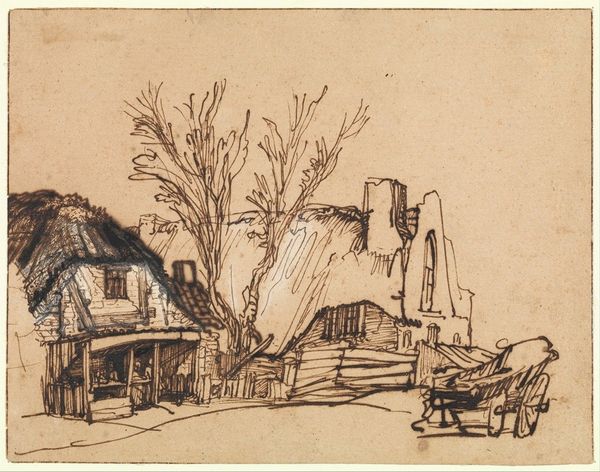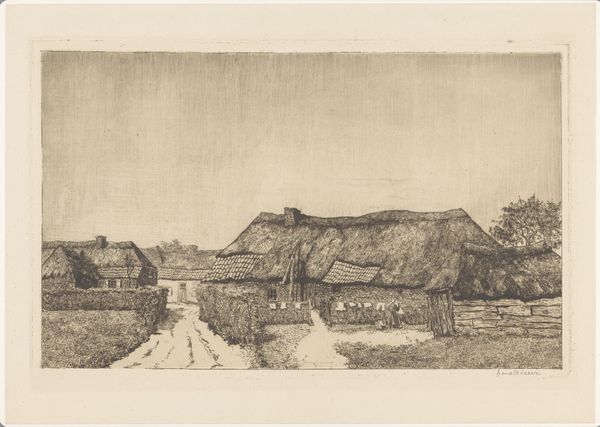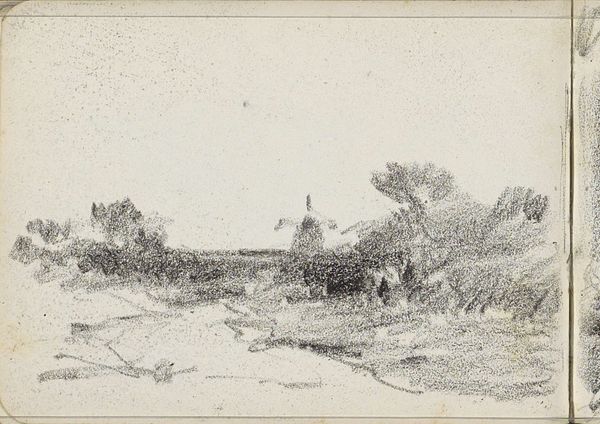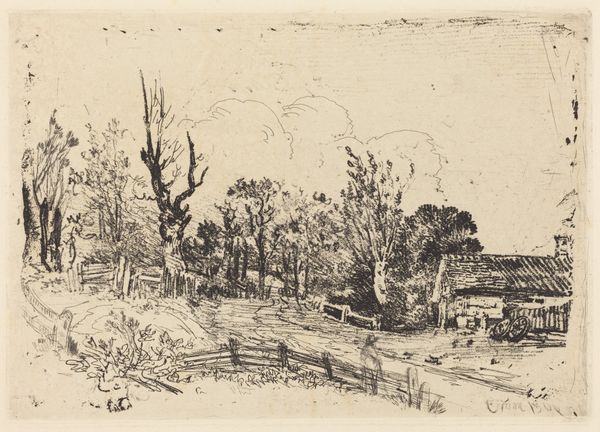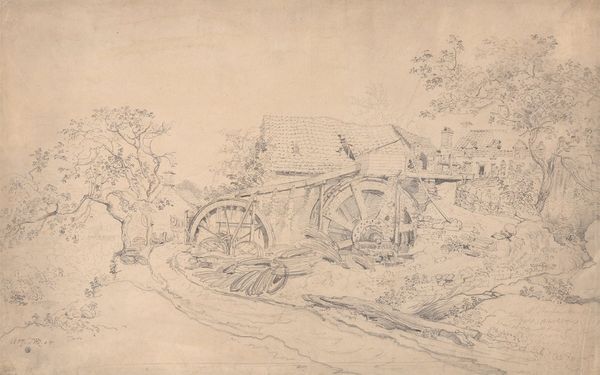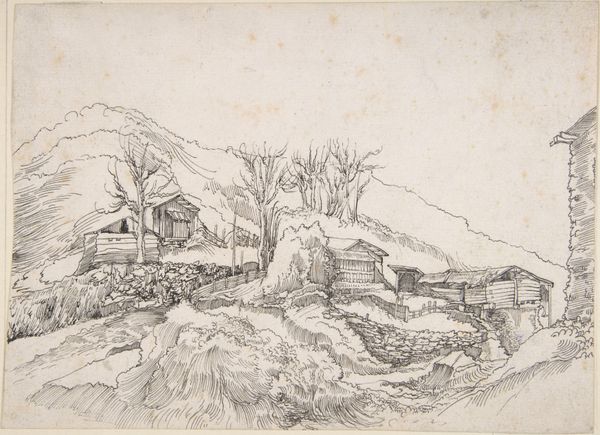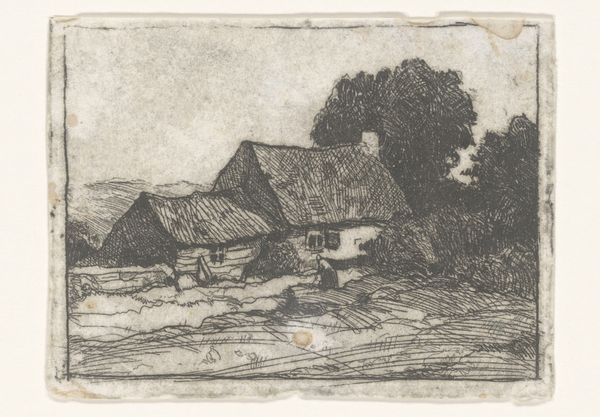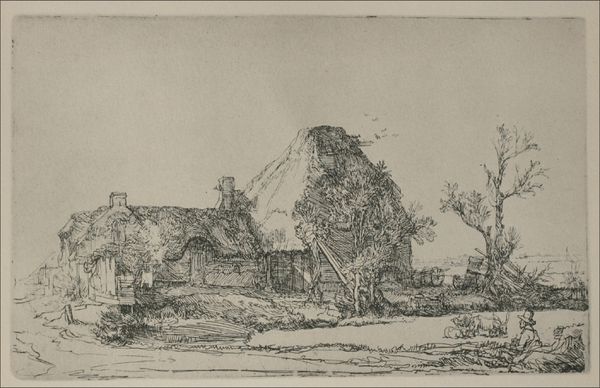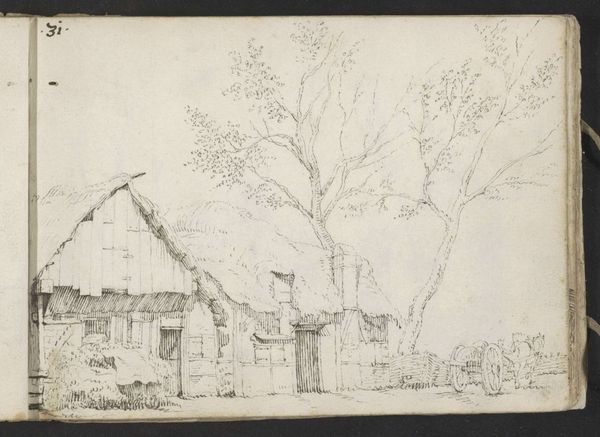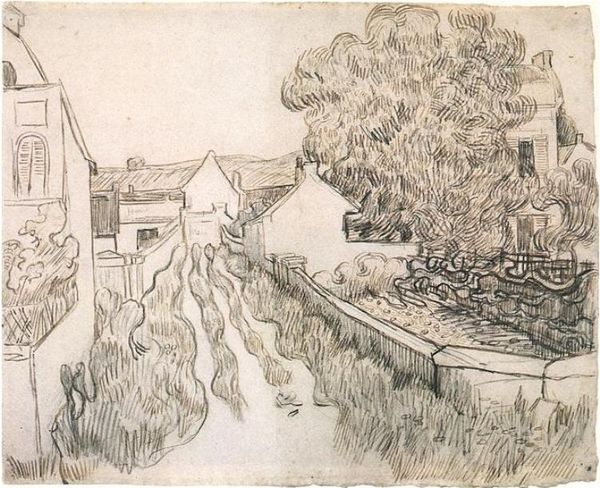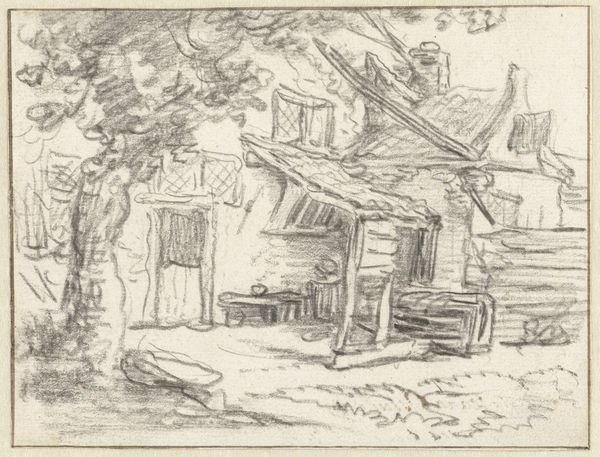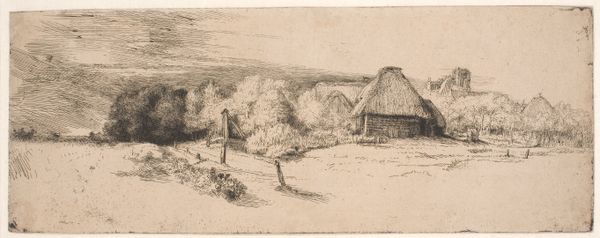
drawing, plein-air, ink
#
drawing
#
ink painting
#
impressionism
#
plein-air
#
landscape
#
ink
#
post-impressionism
Copyright: Public Domain: Artvee
Curator: "Two Cottages at Saintes-Maries-de-la-Mer," made in 1888 by Vincent van Gogh using ink, invites us into a seemingly quiet rural scene. I'm struck by its simplicity. What are your first thoughts? Editor: I'm struck by the level of detail Van Gogh captures with just ink. It feels very immediate, like a quick sketch capturing a fleeting moment. It seems almost…nostalgic, maybe? How do you interpret this work? Curator: Nostalgia is interesting. Consider Van Gogh's positioning within the societal shifts of his time. He often depicted the working class and rural landscapes, but was this simply an aesthetic choice? How might his social consciousness play a role? Editor: I see what you mean. Was he perhaps idealizing a rural lifestyle that was already disappearing with industrialization? Almost like a visual commentary on class? Curator: Precisely! And look closer—the houses themselves, though humble, are rendered with a dignity and solidity. It prompts us to consider who occupied these spaces. What stories of labor, resilience, and community might these walls contain? Editor: So, the cottages aren’t just quaint buildings, but rather stand-ins for the lives and experiences of the people who lived there? That really shifts my perspective. I was looking at it just formally before, but now I'm thinking about the people implied in the picture. Curator: Exactly. And consider that Van Gogh, an outsider himself, was drawn to these marginalized communities. It begs the question of whose stories are deemed worthy of representation and preservation, then and now. It reminds us to look beyond the surface. Editor: It’s incredible how much depth you can find in a simple ink drawing. I definitely see it in a new light now. Curator: Art is never neutral. Examining it through a critical lens reveals layers of meaning that resonate even today.
Comments
No comments
Be the first to comment and join the conversation on the ultimate creative platform.
